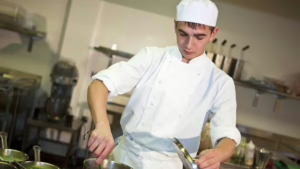According to a new study from King’s Business School, organisations seeking to improve their innovation and creativity can benefit from creating structured spaces in which employees and managers are able to collaborate outside of traditional hierarchies.
The study examines how organisations can overcome structural barriers to innovative thinking by temporarily suspending workplace hierarchy. It also explores ways in which a more creative, inclusive environment can be created. The study suggests that voluntary, structured innovation initiatives can be a powerful tool for breaking down silos in the workplace and encouraging new ideas from across all business functions.
Researchers studied a case within a global firm that specializes in personal care products. A voluntary initiative known as Shark Tank enabled cross-level teams from different levels to develop and pitch new ideas outside of the formal product development process.
Employees and managers were able to prototype and refine their projects together in an environment that promoted open communication and experimentation. The research concept is called the “collaborative mid-ground” – an area within organisations which is semi-structured and psychologically safe, but deliberately separated from routine processes. Hierarchies are temporarily relaxed in this middle ground to encourage creative thinking and share ownership of innovation.
Playful structure enables cross-level creativity
Three key mechanisms are identified in the research that will allow middle grounds to be successful: a playful structure, positive social and emotional interactions, and cognitive engagement via feedback. These elements allow participants to engage in risk, develop mutual trust and develop their ideas more effectively than they would be able to do in a conventional environment.
In the Shark Tank, pairing junior and senior employees into voluntary teams allowed participants to form relationships by sharing challenges. The process involved pitching ideas, getting feedback, and refining the proposals in a supportive environment. This enabled collaboration between levels and departments.
Professor Nadine Schholz, lecturer in entrepreneurship at King’s Business School said: “As hybrid working continues to reshape the organisational culture, this study highlights the importance of creating deliberate spaces for innovative thinking that go beyond digital technology or ad-hoc brainstorming.
In large organisations, creativity is often suppressed by rigid processes and cultures that are risk-averse. The collaborative middle-ground offers an alternative, in the form a semi-structured and safe space where new ideas are able to emerge. Diverse actors can also work together in innovative ways.
AI, sustainability and cross-functional innovations: Lessons to be learned
Researchers argue that this approach is particularly relevant for organisations preparing to face future challenges such as artificial intelligent, environmental sustainability, and the need for inter-functional collaboration.
Prof. Marcela Miozzo of King’s Business School’s Innovation Management and Entrepreneurship Department said, “Our findings are particularly relevant for businesses that are preparing to face the challenges of AI and cross-functional innovations.” Innovation requires structure, but also autonomy, safety and freedom to experiment.
The study emphasized that these spaces were not meant to replace existing innovation processes, but as a complement. The collaborative middle ground provides a flexible yet structured environment that allows new ideas to tested without being constrained by traditional organisational procedures.
Gabriela Gutierrez Huerter O is a Senior Lecturer at King’s Business School. She added: “Our research shows how structured collaboration spaces foster innovation by fostering mutual trust and sharing ownership.” Organisations can unleash the creative potential of their employees and managers by creating an environment where they co-create.



